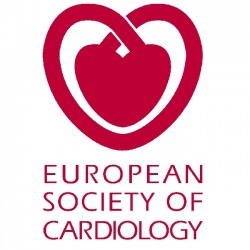European Society of Cardiology: Best of ESC Congress 2013
We must not forget that despite advances, cardiovascular disease remains the number one killer in Europe.

Clinical trials with immediate implications on clinical practice and future guidelines presented at ESC Congress 2013. Huge inequalities in health care persist, ESC will continue efforts to lobby for best treatments to be equally accessible to all European patients.
Close to thirty thousand delegates converged from all over the world, to the ESC Congress 2013 in Amsterdam this week. Cardiologists came to hear first-hand about the latest research. "A record number of Hot Lines and scientific sessions with new formats allowed for more exchanges between peers presenting results of clinical trials, new Clinical Practice Guidelines and new devices and treatments," said Professor Keith Fox, Chair of the ESC Scientific Programme Committee. We have much to learn from each other!
Some of the most important studies presented at ESC Congress 2013, according to Prof. Fox were:
· HOKUSAI-VTE: The oral anticoagulant edoxaban for the treatment of venous thromboembolism (VTE) resulted in equal efficacy and better safety compared to standard warfarin, when either drug was used with initial low molecular weight heparin (LMWH)
· TASTE: The aspiration of the blood clot or “thrombus” that causes a heart attack before re-opening a patient’s artery with a balloon catheter does not improve survival compared to performing balloon dilation and stenting alone
· REALIGN: Results reaffirm current guidelines excluding patients with a narrow QRS for CRT, and expand the body of evidence that simple electrocardiographic determination of QRS duration remains the most important predictor of the clinical benefits of CRT, rather than measures of mechanical dyssynchrony by echocardiography. Based on the results of EchoCRT, the identification of patients who will obtain the benefit of CRT can be done most easily by a 12 lead-ECG.
· DECAAF: Results showed that in patients with atrial fibrillation, delayed enhancement magnetic resonance imaging (DE-MRI) performed before ablative treatment can stage the degree of damaged heart tissue (atrial fibrosis) and help predict whether treatment will be successful or not
· PRAMI: Heart attack patients with ST elevation who undergo a preventive procedure to unblock additional coronary arteries have significantly better outcomes than those whose treatment is confined to the culprit blockage only.
“These studies will influence clinical practice and will allow us to better understand how to manage these important conditions and how to devise even newer therapies,” explained Prof Fox.
“We have come a long way in cardiovascular science, but many patients in Europe still do not have access to the latest treatments. This is unacceptable.” said Professor Panos Vardas, President of the ESC. “Just as we have tackled innovation in the past - and we still do, as the enormous amount of research presented at this Congress shows - the society is now committed to making the needs of patients known to those in charge of designing and implementing policies in European institutions and in each of our member countries. We need to fight for better healthcare and guideline implementation.” he said. Earlier this year the ESC and its sponsors published a White Paper on the state of research and development in cardiology calling for urgent investment in CVD innovation. With a growing ageing population and considering the increase of cardio metabolic diseases, doctors are expecting the incidence of CVD to rise in the future. “We must not forget that CVD remains the number one killer in Europe.” said Prof Vardas.
“Studies such as PURE and EUROASPIRE IV confirm these differences and also the need to strive for better and equal access of patients in all countries to better prevention programmes, to the best treatment and also rehabilitation.” Prof Vardas concluded.
“Over five hundred journalists attended ESC Congress 2013.” said Kurt Huber, Chair of the ESC Press Committee. “Once again, they helped us reach out to the public with key prevention messages. Eighty per cent of CVD could be avoided if people adopted healthier lifestyles and there is a long way to go between knowing what should be done and doing.”
Some of the most popular “stories” with the wide range of media covering the event from Amsterdam were:
· The Tour de France study demonstrating that French participants in the between 1947–2012 lived longer than their same-age French counterparts
· Listening to music that makes you happy and relaxed alone and in addition to regular exercise training improves endothelial function (by releasing endorphins)
· Cold weather is by far the most important environmental trigger for heart attacks whereas air pollution has a lesser effect
· Statins show protective effect preventing cataracts, the leading cause of visual impairment worldwide affecting more than 20 million people
Prof Fox concluded: “It was great to see hundreds of doctors cycling to the congress centre in the morning. Let’s just hope that their example will help drive home the importance of exercise to live a long and healthy life, even if we cannot emulate our Tour de France heroes!”
04.09.2013











